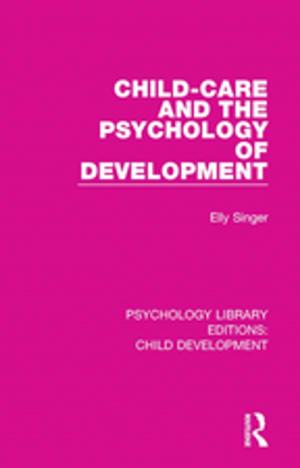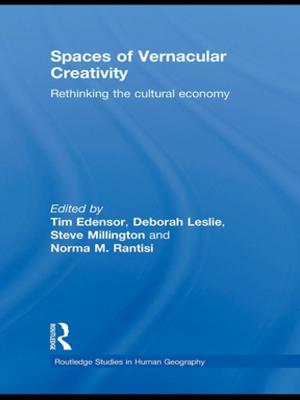Structure and Spontaneity in Clinical Prose
A writer's guide for psychoanalysts and psychotherapists
Nonfiction, Health & Well Being, Psychology, Psychoanalysis, Mental Health| Author: | Suzi Naiburg | ISBN: | 9781136946226 |
| Publisher: | Taylor and Francis | Publication: | April 10, 2015 |
| Imprint: | Routledge | Language: | English |
| Author: | Suzi Naiburg |
| ISBN: | 9781136946226 |
| Publisher: | Taylor and Francis |
| Publication: | April 10, 2015 |
| Imprint: | Routledge |
| Language: | English |
Structure and Spontaneity in Clinical Prose will teach you to read gifted writers for inspiration and practical lessons in the craft of writing; apply the principles and techniques of the paradigmatic, narrative, lyric narrative, evocative, and enactive modes of clinical prose; and put what you learn immediately into practice in eighty-four writing exercises.
Each of the five modes uses different means to construct worlds out of language. The paradigmatic abstracts ideas from experience to build concepts and theories. The narrative mode organizes experience through time*,* creating meaningful relationships between causes and effects. Lyric narratives present events unfolding in an uncertain present. The evocative mode works by invitation and suggestion*,* and the enactive mode creates an experience to be lived as well as thought.
Structure and Spontaneity is fundamentally a book about reading and writing in new and different ways. It is an invaluable resource for new and experienced psychoanalysts and psychotherapists and for students, teachers, editors, and writers in the humanities and social sciences.
Structure and Spontaneity in Clinical Prose will teach you to read gifted writers for inspiration and practical lessons in the craft of writing; apply the principles and techniques of the paradigmatic, narrative, lyric narrative, evocative, and enactive modes of clinical prose; and put what you learn immediately into practice in eighty-four writing exercises.
Each of the five modes uses different means to construct worlds out of language. The paradigmatic abstracts ideas from experience to build concepts and theories. The narrative mode organizes experience through time*,* creating meaningful relationships between causes and effects. Lyric narratives present events unfolding in an uncertain present. The evocative mode works by invitation and suggestion*,* and the enactive mode creates an experience to be lived as well as thought.
Structure and Spontaneity is fundamentally a book about reading and writing in new and different ways. It is an invaluable resource for new and experienced psychoanalysts and psychotherapists and for students, teachers, editors, and writers in the humanities and social sciences.















